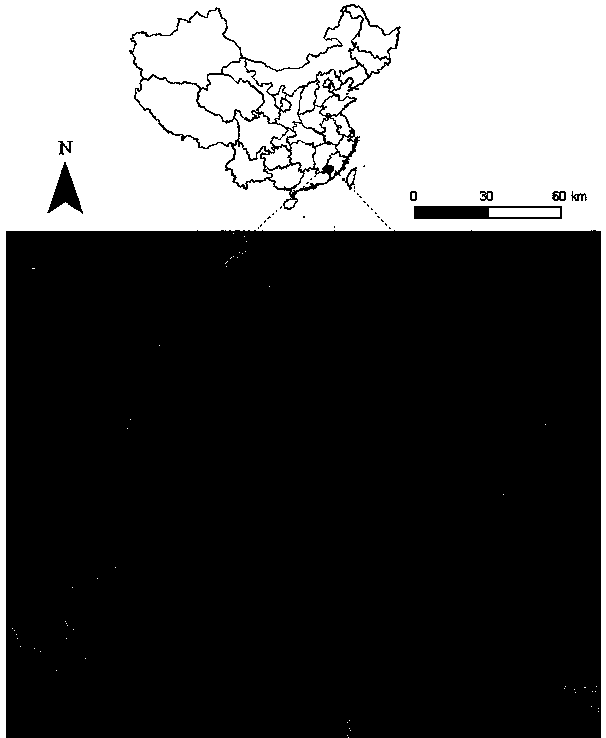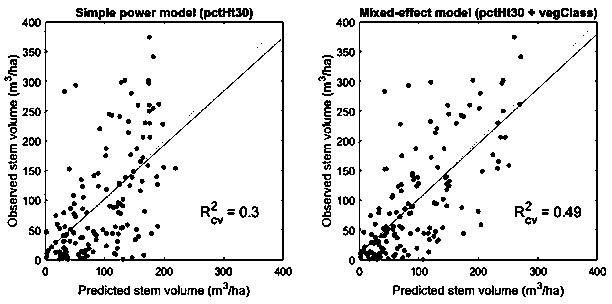Mixed effect model for predicting large-area subtropical forest biomass
A forest biomass and mixed effect technology, applied in the direction of measuring devices, radio wave measurement systems, electromagnetic wave reradiation, etc., can solve the problems of using and not yet having laser radar, and achieve the effect of improving the estimation accuracy
- Summary
- Abstract
- Description
- Claims
- Application Information
AI Technical Summary
Problems solved by technology
Method used
Image
Examples
Embodiment 1
[0032] A mixed-effects model for predicting trunk volume in large subtropical forests based on lidar and vegetation type, including the following steps:
[0033] 1) Overview of the test area
[0034] The research area is located in Fujian Province, covering the entire Longyan City (about 19000km 2 ), next to the Taiwan Strait in southeastern China ( figure 1 ). Fujian is the province with the highest forest coverage in China, and Longyan is the county with the highest forest coverage (about 78%) in Fujian. Most of the province is mountainous and has a vast territory. In Longyan, about 95% of the land is mountainous and hilly, with an average slope of about 28 degrees and an altitude between 69m and 1811m above mean sea level. The climate is affected by the subtropical marine monsoon, making it one of the provinces with the most precipitation in the country (about 1700mm / a).
[0035] 2) LiDAR data acquisition and preprocessing
[0036] Airborne lidar data was collected us...
PUM
 Login to View More
Login to View More Abstract
Description
Claims
Application Information
 Login to View More
Login to View More - R&D
- Intellectual Property
- Life Sciences
- Materials
- Tech Scout
- Unparalleled Data Quality
- Higher Quality Content
- 60% Fewer Hallucinations
Browse by: Latest US Patents, China's latest patents, Technical Efficacy Thesaurus, Application Domain, Technology Topic, Popular Technical Reports.
© 2025 PatSnap. All rights reserved.Legal|Privacy policy|Modern Slavery Act Transparency Statement|Sitemap|About US| Contact US: help@patsnap.com



